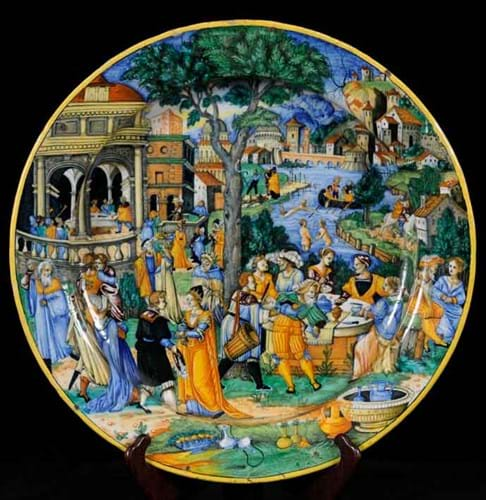The buyer at the single-lot sale on February 14 was the Bond Street jewellery and objects of vertu specialist SJ Phillips.
A magnificent example of Renaissance pottery represented the discovery of a lifetime for Richard Bromell - now in his 28th year as an auctioneer. In November he spotted it in a house in Somerset where it was hanging on a wall behind a door - its significance unknown to the vendor who could shed little light on its origins.
Although suspended only by a makeshift wire hanger, the like of which gives ceramics specialists sleepless nights, it had survived its five centuries in remarkable condition. The only significant imperfection was an 1.5in (3.5cm) restuck chip.
Authentication
Staff at the Ashmolean Museum in Oxford had been happy to confirm Mr Bromell's instincts. Professor Timothy Wilson of the Ashmolean Museum aided in the identification of the charger, dating it to Urbino c.1540, while Dr Mercedes Ceron identified the scene as The Feast of Herod.
Although there are a few alterations to the print (the omission of the figure of Death) the source for the ambitious decoration is an engraving by the German printmaker Sebald Beham (1500-1550).
Who painted it is a matter for further research.
There was the tantalising possibility of a signature painted within the drapery of a figure seated to the right of the main table (and an area of glue residue to the middle of the reverse of the charger where a label had previously been applied) but it was otherwise uninscribed.
The buyer's premium was 19.5%.





